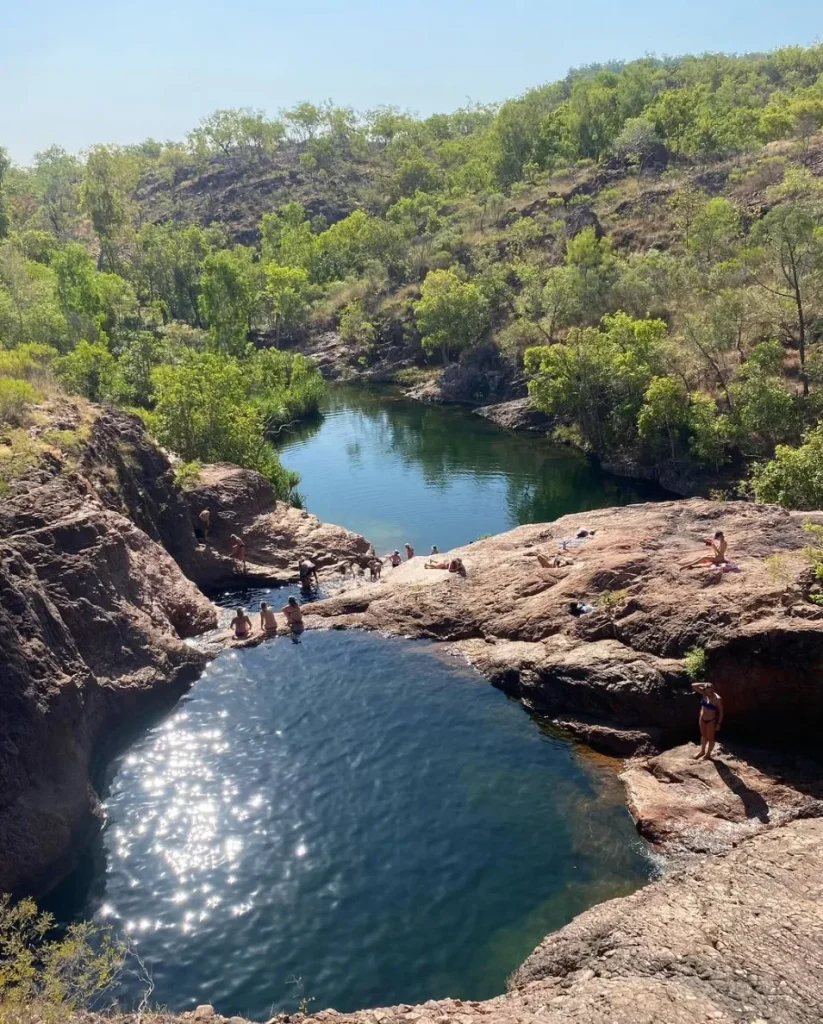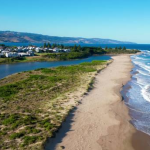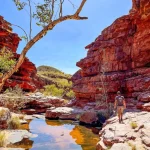Litchfield National Park is only 1.5 hours from Darwin City and is one of the Northern Territory’s most beautiful places. Famous for its waterfalls, landscapes and iconic wildlife, this ancient landscape is a must-see for nature lovers. Whether you’re here for a day, a few days or an overnight camping trip Litchfield has natural beauty, cultural significance and wildlife in abundance. With Wangi Falls, Florence Falls, magnetic termite mounds and more, you’ll have unforgettable encounters with native birds, freshwater crocodiles and other Aussie wildlife in their natural habitat. Litchfield National Park, with its stunning waterfalls and rich wildlife, offers an unforgettable experience for nature lovers exploring Australia’s Northern Territory.
This guide will help you find Litchfield’s wildlife, the park’s scenery and everything you need to know for a successful trip, whether you’re birdwatching, swimming in plunge pools or learning about the park’s rich Aboriginal culture.
Litchfield’s Waterfalls and Wildlife Hotspots
Wangi Falls
One of Litchfield’s top attractions, Wangi Falls, is famous for its scenery and natural plunge pools. During the dry season, this is a favourite spot for swimming, picnicking and wildlife spotting. With its surrounding monsoonal forests, the falls are a haven for wildlife, including exotic birds and agile wallabies. In the wet season the falls are particularly spectacular with the water cascading in full force, it’s an amazing sight. However, swimming is often restricted during this time due to saltwater crocodiles. The viewing deck is a great spot to see the falls and wildlife safely.
Florence Falls
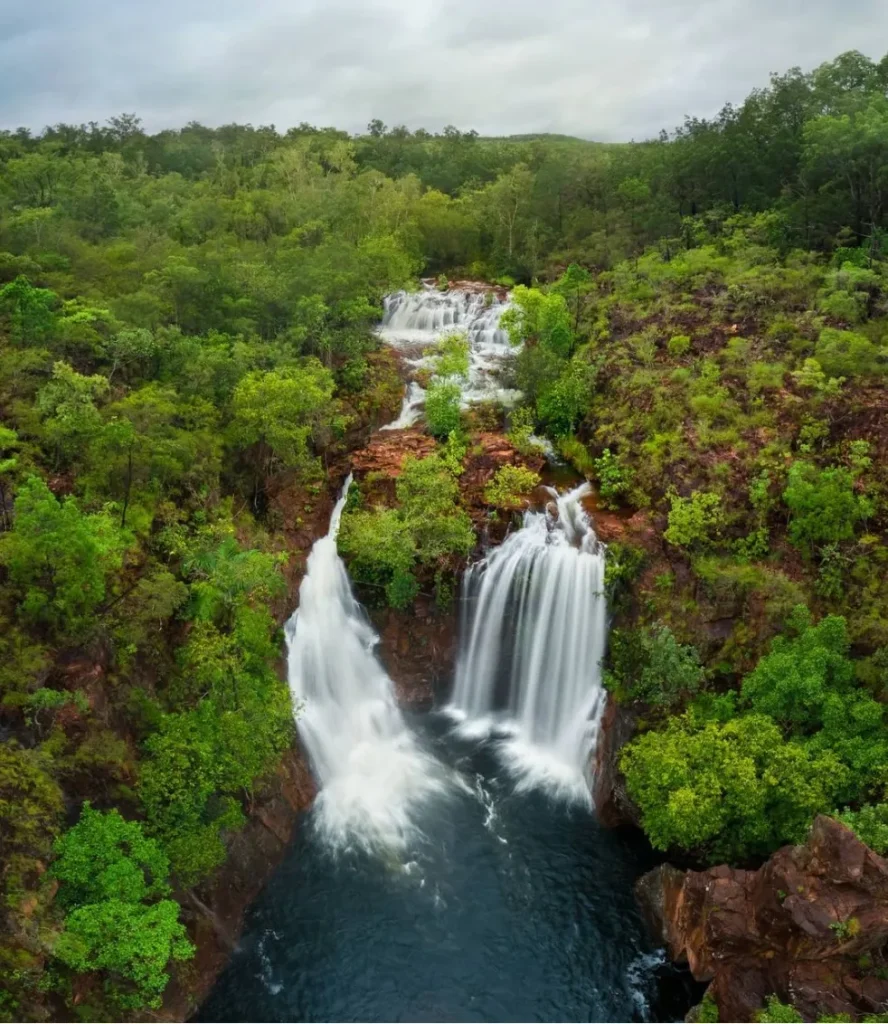
Florence Falls is another of Litchfield’s gems. The double waterfall drops into a crystal clear swimming hole, making it one of the best swimming spots in the park. Surrounded by a cool monsoon rainforest, this area is alive with wildlife, from small mammals to colourful birds. Florence Falls is also great for hiking, with a 160-step walk down to the base of the falls. The viewing platform at the top is a stunning view of the falls and the monsoon forest. Whether you’re here for a day trip or a few days camping, Florence Falls is the perfect spot to chill out and get back to nature.
Tolmer Falls
For a more secluded and peaceful waterfall experience, Tolmer Falls is the spot to get away from the crowds. With towering cliffs and a dramatic drop into a deep gorge, Tolmer Falls is a wildlife haven. Home to northern quolls and a colony of ghost bats, this is one of the only places in Litchfield where you can see these rare creatures. The walking trail to the viewing platform has great views of the falls and the ancient landscape.
Tjaetaba Falls
In the Greenant Creek area, Tjaetaba Falls offers a more peaceful wildlife experience. The plunge pool at the top of the falls is a sacred site for the local Aboriginal people, so please be respectful of this area. This area is less visited than Florence Falls or Wangi Falls so it’s a great spot for birdwatching and relaxing by the water. The walk to the falls goes through a lush monsoon forest, home to many bird species and reptiles like frill-necked lizards. Tjaetaba Falls is a great place to combine nature with respect for the park’s Aboriginal culture.
Wildlife in Litchfield National Park
Litchfield National Park is a wildlife haven with many opportunities to see a variety of animals in their natural habitat. From birds to reptiles to mammals, the park’s diverse ecosystems are perfect for wildlife to thrive. Let’s take a look at some of the park’s top wildlife attractions.
Birdwatching
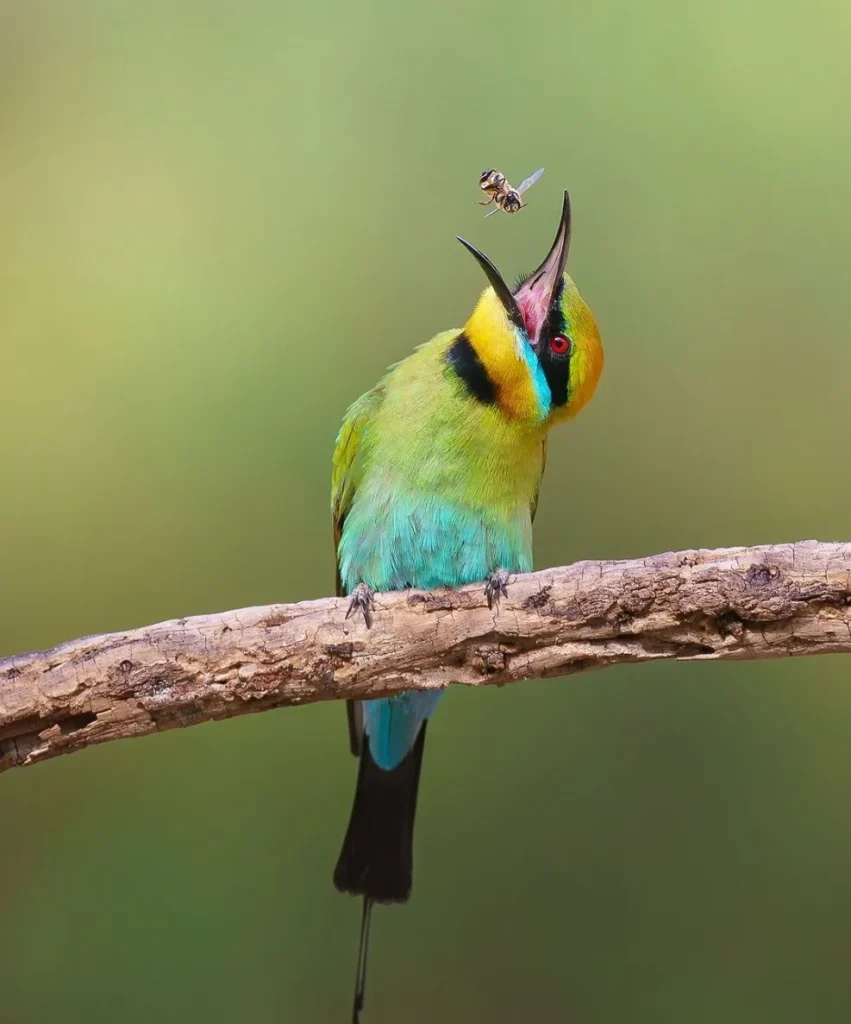
Litchfield’s Monsoon Forests are a birdwatcher’s dream, you can see many bird species from small honeyeaters to big eagles. Early morning is the best time to see some of the park’s more elusive species. Areas like Walker Creek, Florence Falls and Tolmer Falls are the best places to spot native birds like black kite, rainbow bee-eater and various kingfishers. Don’t forget your binoculars when walking along these trails!
Reptiles
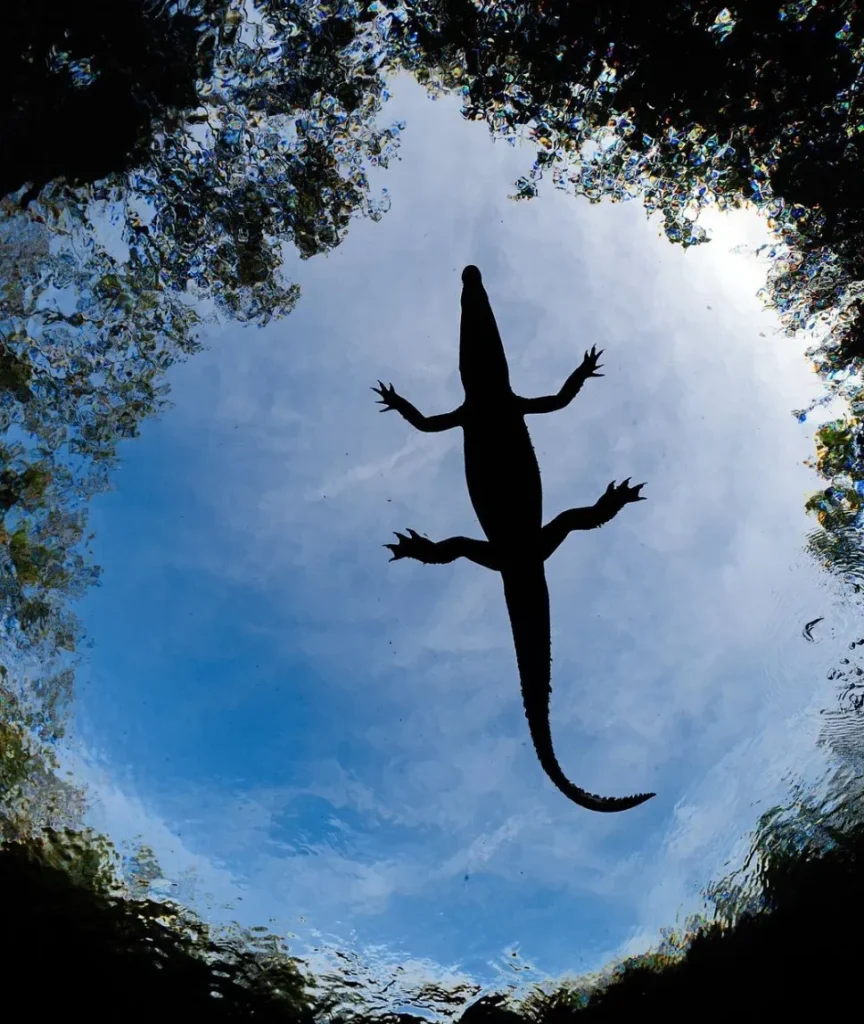
Among the reptiles in Litchfield are freshwater crocodiles. These are the most exciting to see. Unlike their more aggressive saltwater crocodile cousins, freshwater crocs are shy and avoid humans but still exercise crocodile safety in the wet season, especially around swimming holes like Wangi Falls and Tolmer Falls. Other reptiles to look out for are frill-necked lizards, northern monitors, and various species of pythons, such as the water python, which is often seen near water pools in the park.
Mammals
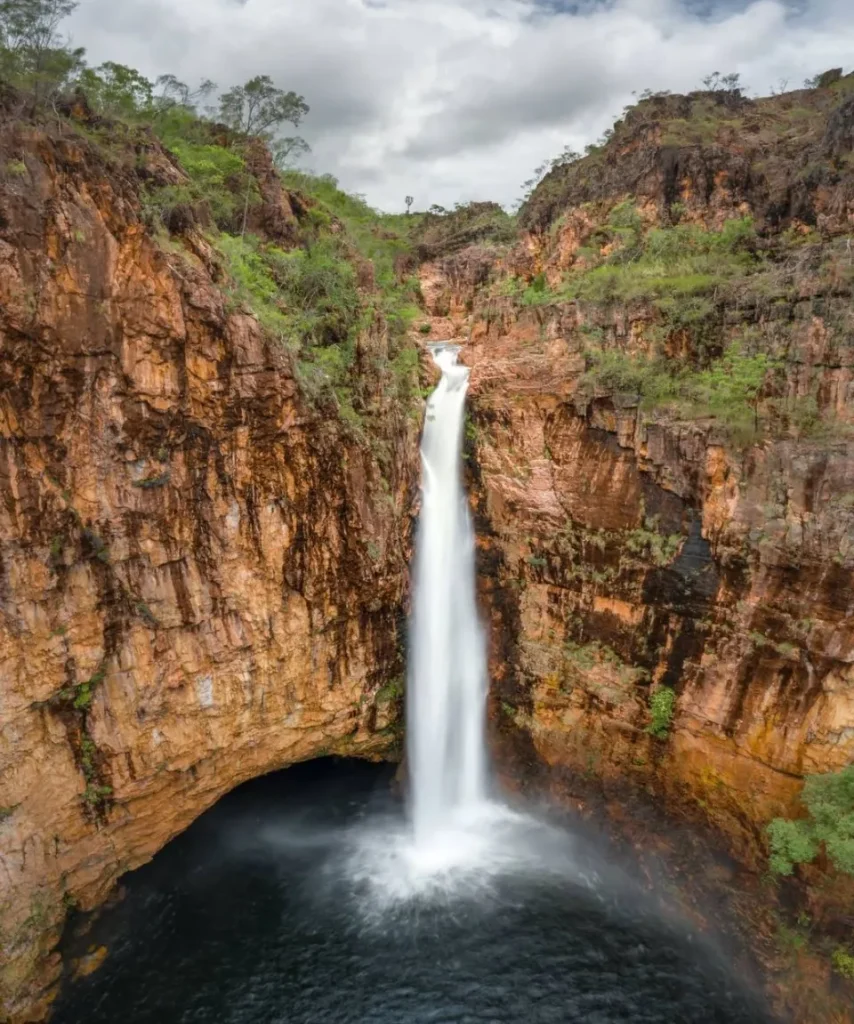
Most mammals in Litchfield are nocturnal, but you may see agile wallabies grazing near Wangi Falls or along the open plains near Tolmer Falls. One of the park’s rarer residents, the northern quoll, can be seen in more remote areas. Nighttime wildlife tours are the best way to see these nocturnal creatures in action. Northern quolls are small carnivorous marsupials that are very elusive, but with a bit of patience, you may see one early morning or late afternoon.
Magnetic Termite Mounds
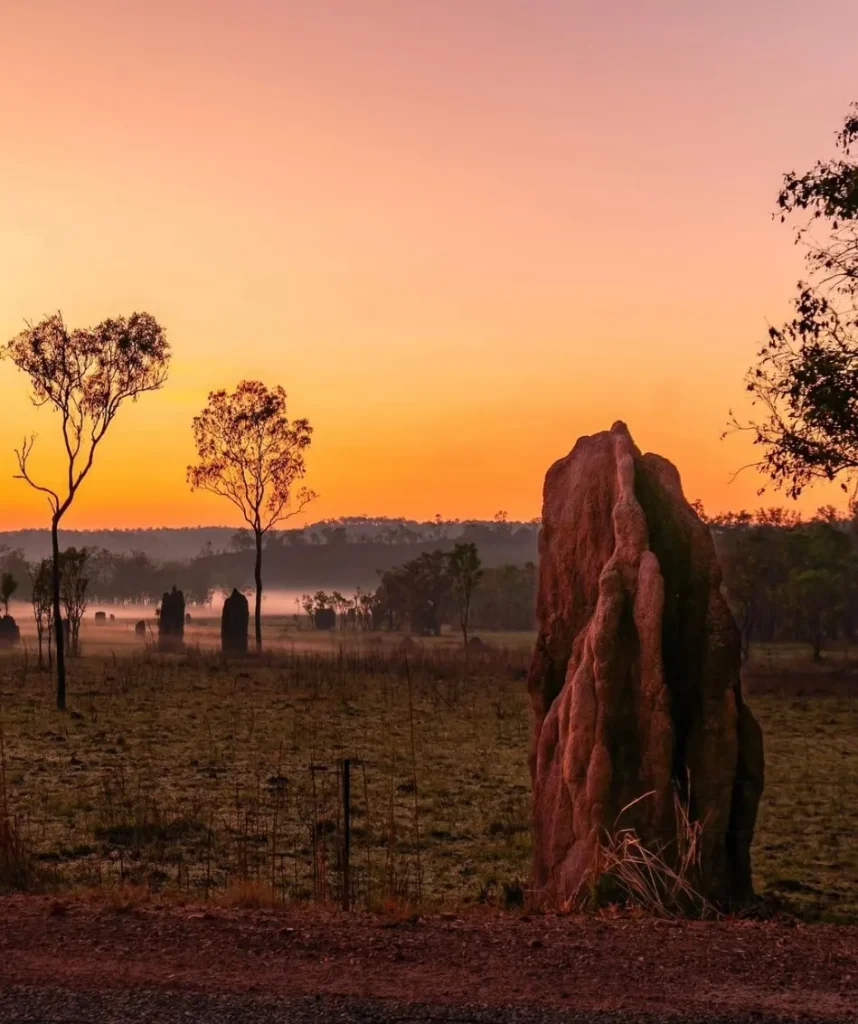
The magnetic termite mounds in Litchfield are the most amazing. These big termite mounds can be up to 3m high and are aligned north to south to regulate the temperature inside the mound. These are a window into the complex ecosystems at work in the park and a testament to the incredible history of these tiny giants.
When to visit Litchfield for wildlife
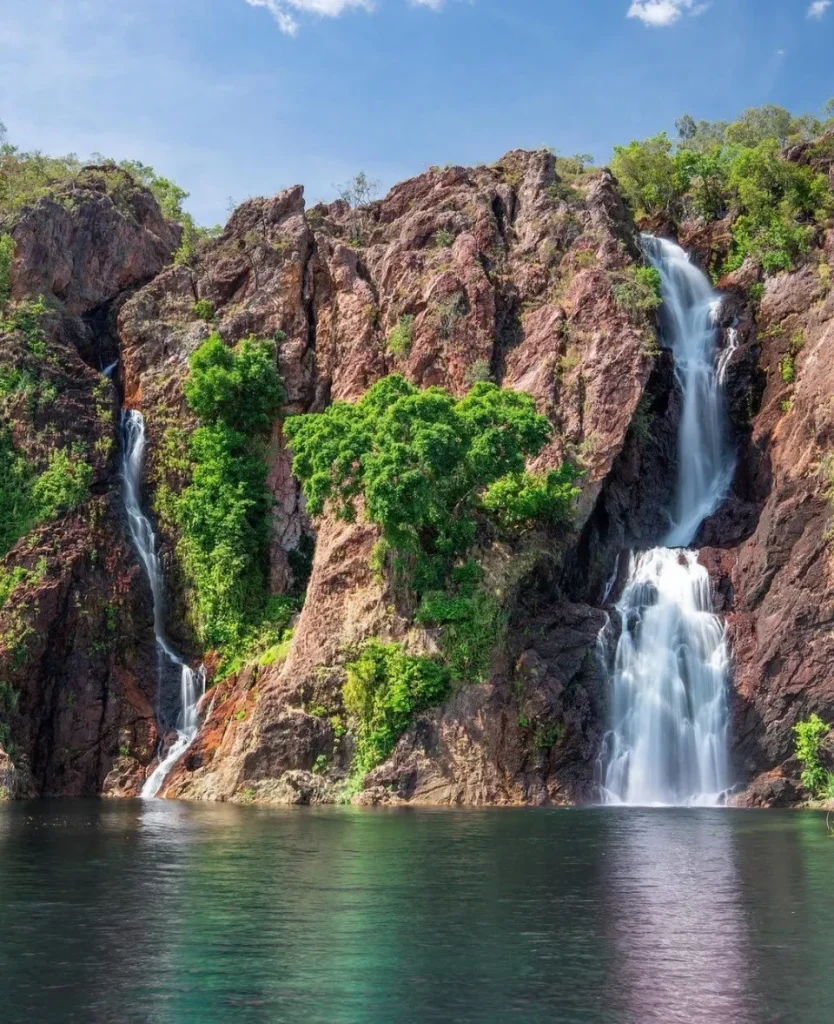
The best time to visit Litchfield for wildlife is during the dry season (May to October). The dry conditions have animals congregating around water sources like Florence Falls, Wangi Falls and Walker Creek. Wildlife is easier to see during these cooler months, so it’s a great time to birdwatch and hike.
The wet season (November to April) turns the park into a green oasis, with all the waterfalls at their best. Some areas may be closed due to flooding or saltwater crocodiles, especially around Florence Falls and Wangi Falls. Swimming may be restricted, but the wet season is the best time to see the park in all its glory, with waterfalls and wildlife in full bloom.
Cultural Significance of Litchfield
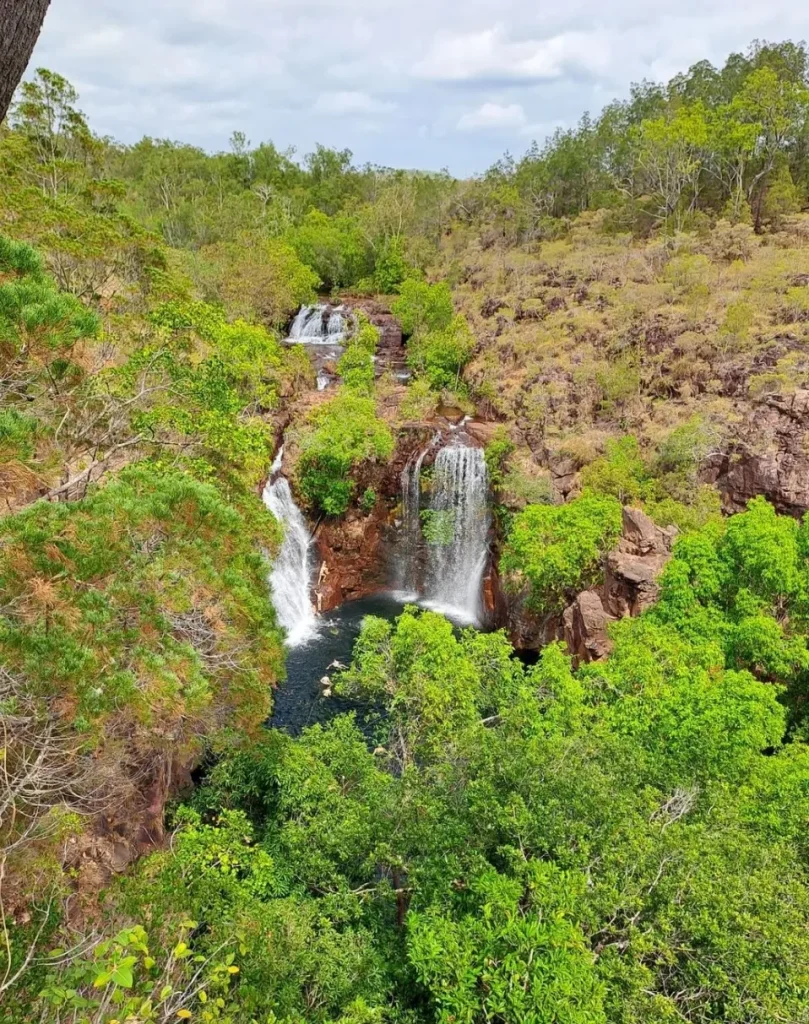
Litchfield is not just a natural wonderland but also a culturally significant region. The park has been home to the Limilngan-Wulna and Koongurrukun people for thousands of years, and many of its landmarks are of cultural significance. Sites like Tjaetaba Falls are sacred, and visitors are asked to respect these areas by not entering them. For those interested in learning more about the culture of the region, there are guided Litchfield national park day tour that will give you insight into the land’s spiritual and historical importance. The connection between the Aboriginal people and the land is deep. Litchfield is a living museum of ancient spirits and traditions.
Nature Lovers
Lost City
The Lost City is one of the park’s most unusual geological formations. These sandstone pillars are like the ruins of an ancient city and the landscape is like stepping back in time. As you walk through the Lost City you’ll be surrounded by towering rock formations and have plenty of opportunities to see wildlife.
Greenant Creek
Greenant Creek is for those who want a more peaceful experience of Litchfield’s natural beauty. The lush surroundings of Greenant Creek are alive with wildlife and the walk to Tjaetaba Falls has great views of the park’s landscapes. If you want a peaceful retreat in nature this part of the park is perfect for finding hidden swimming holes and seeing animals without the crowds.
Litchfield National Park Wildlife Tips
- Swimming Safety: Always follow the signs, especially during the wet season when saltwater crocodiles are more active. Some swimming holes, like Florence Falls and Wangi Falls, may close during high crocodile activity.
- Best Wildlife Spotting Times: Early morning and late afternoon are the best times to see wildlife, as they are more active during these cooler parts of the day.
- Bring Binoculars: If you’re a birdie, bring binoculars! Florence Falls, Tolmer Falls and Walker Creek are the best spots to see native birds in action.
- Guided Tours: Consider booking a guided tour, like a Litchfield National Park Tour, for expert knowledge of the park’s wildlife and cultural significance. Local guides know the area like the back of their hand and can show you species you would miss on your own.
FAQ
Where are the best wildlife viewing areas in Litchfield National Park?
Florence Falls, Wangi Falls, Tolmer Falls and Greenant Creek are the best wildlife viewing areas. These areas have natural habitats for native birds, wallabies and sometimes freshwater crocodiles.
Can I swim in Litchfield National Park?
Yes, many of the swimming holes are safe during the dry season, Florence Falls, Wangi Falls and Walker Creek. But during the wet season some areas may be closed due to saltwater crocodiles.
When is the best time to see wildlife in Litchfield?
Best time for wildlife is during the dry season (May to October) when animals are more visible around water sources. Wet season is great for scenery but access is more restricted.
What is the cultural significance of Tjaetaba Falls?
Tjaetaba Falls is a sacred site for the local Aboriginal people. Please respect these areas and do not enter any sites marked as sacred.
Is Litchfield National Park kid friendly?
Yes! It’s a great day trip, with accessible swimming holes, picnic areas and short walks. Wangi Falls and Florence Falls are the best for a fun family day out in nature.
